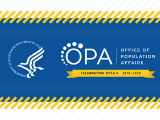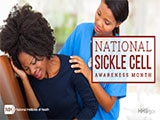Ending the HIV Epidemic: A Plan for America
In his State of the Union address Tuesday night, President Trump announced one of the most important public health initiatives in history: ending the HIV epidemic in America.
The President sees a once-in-a-generation opportunity to end the epidemic, thanks to the most powerful HIV prevention and treatment tools in history and new tools that allow us to pinpoint where HIV infections are spreading most rapidly.
Thanks to the HIV medicine antiretroviral therapy (ART), individuals with HIV that take their medicine as prescribed and maintain an undetectable viral load can live long, healthy lives and have effectively no risk of sexually transmitting HIV to a partner.
Thanks to pre-exposure prophylaxis (PrEP) medication, the risk of contracting HIV from someone is reduced by up to 97 percent.
And thanks to new laboratory and epidemiological techniques, we are able to focus in on geographic regions in greatest need of additional resources.
Ending the HIV Epidemic: A Plan for America, acts boldly on this unprecedented opportunity by providing the hardest hit communities with the additional expertise, technology, and resources required to address the HIV epidemic in their communities.
Since the late 1980s, enormous progress has been made in the fight against HIV, but there is still work to be done. The U.S. government spends more than $20 billion annually in direct health expenditures for HIV prevention and care. National interventions have driven the number of new HIV infections down to approximately 40,000 per year – the lowest level ever.
But not everyone is benefiting equally from these advances. New infections are highly concentrated among men having sex with men; minorities, especially African Americans, Hispanics/Latinos, and American Indians and Alaska Natives; and those who live in the southern United States.
And stigma – which can be a debilitating barrier preventing someone living with HIV or at risk for HIV from receiving the healthcare, services and respect they need and deserve – still tragically surrounds HIV. This is not just as a biomedical issue, but a social challenge, too.
Further, recent data show our progress reducing the number of new infections has plateaued, and there are new threats to the progress we’ve made, the most significant being the opioid crisis: One in 10 new HIV infections occur among people who inject drugs.
We have the tools available to end the HIV epidemic, and most infections are now highly concentrated in certain geographic hotspots. More than 50 percent of new HIV diagnoses in 2016 and 2017 occurred in 48 counties, Washington, D.C., and San Juan, Puerto Rico. We also know certain rural areas carry a disproportionately high burden of HIV, especially in the South.
The President’s initiative will work to reduce new infections by 75 percent in the next five years and by 90 percent in the next ten years, averting more than 250,000 HIV infections in that span.
The plan will fund three major areas of action:
- Increasing investments in geographic hotspots through our existing, effective programs, such as the Ryan White HIV/AIDS Program, as well as a new program through community health centers that will provide medicine to protect persons at highest risk from getting HIV.
- Using data to identify where HIV is spreading most rapidly and guide decision-making to address prevention, care and treatment needs at the local level.
- Providing funds for the creation of a local HIV HealthForce in these targeted areas to expand HIV prevention and treatment.
Our efforts will focus on four key strategies that together can end the HIV epidemic in the U.S.: Diagnose, Treat, Protect, and Respond.
Diagnose all individuals with HIV as early as possible after infection. Approximately 165,000 Americans are living with HIV but don’t know they have it. Early detection is critical and can lead to quicker results in treatment and prevent transmission to others. Using the latest diagnostics and advanced automation systems, we will make HIV testing simple, accessible and routine. And we will diagnose infection early and connect patients immediately to care.
Treat the infection rapidly and effectively after diagnosis, achieving sustained viral suppression. Eighty-seven percent of annual new infections are transmitted by those not receiving HIV care and treatment. But individuals with HIV who take medication as prescribed and stay virally suppressed can live long, healthy lives and have effectively no risk of sexually transmitting HIV to a partner. We will establish and expand programs to follow up with individuals no longer receiving care—and provide the resources needed to re-engage them in HIV effective care and treatment. The Ryan White HIV/AIDS Program has achieved a viral suppression rate of nearly 86 percent. We aim to leverage the program’s comprehensive system of care and treatment to increase viral suppression around the country to 90 percent.
Protect individuals at risk for HIV using proven prevention approaches. Of the estimated 1 million Americans at substantial risk for HIV and who could benefit from PrEP, fewer than 10 percent are actually using this medication. Increasing PrEP use among high-risk groups could prevent almost 50,000 HIV infections by 2020.
Respond rapidly to detect and respond to growing HIV clusters and prevent new HIV infections. New laboratory methods and epidemiological techniques allow us to see where HIV may be spreading most rapidly, thereby allowing CDC and other partners to quickly develop and implement strategies to stop ongoing transmission. We will work with impacted communities to ensure they have the technology, personnel and prevention resources to follow up on all HIV cases and to intervene to stop chains of transmission, and to get those impacted into appropriate care and treatment.
We have lost more than 700,000 American lives to HIV since 1981. Within the next 10 years, we have the chance to end the HIV epidemic for the next generation. We can’t afford not to: Without this new intervention, new infections will continue and we face the very real possibility that they will increase, costing more lives and the U.S. government more than $200 billion in direct lifetime medical costs for HIV prevention and medication.
Thanks to President Trump’s leadership, we move forward committed to ending the HIV epidemic in America.
For more information, visit HIV.gov.
Read the fact sheet Ending the HIV Epidemic: A Plan for America
My First Year as HHS Assistant Secretary for Health
Chicken Eyes: A Gene Therapy Journey to Sight


